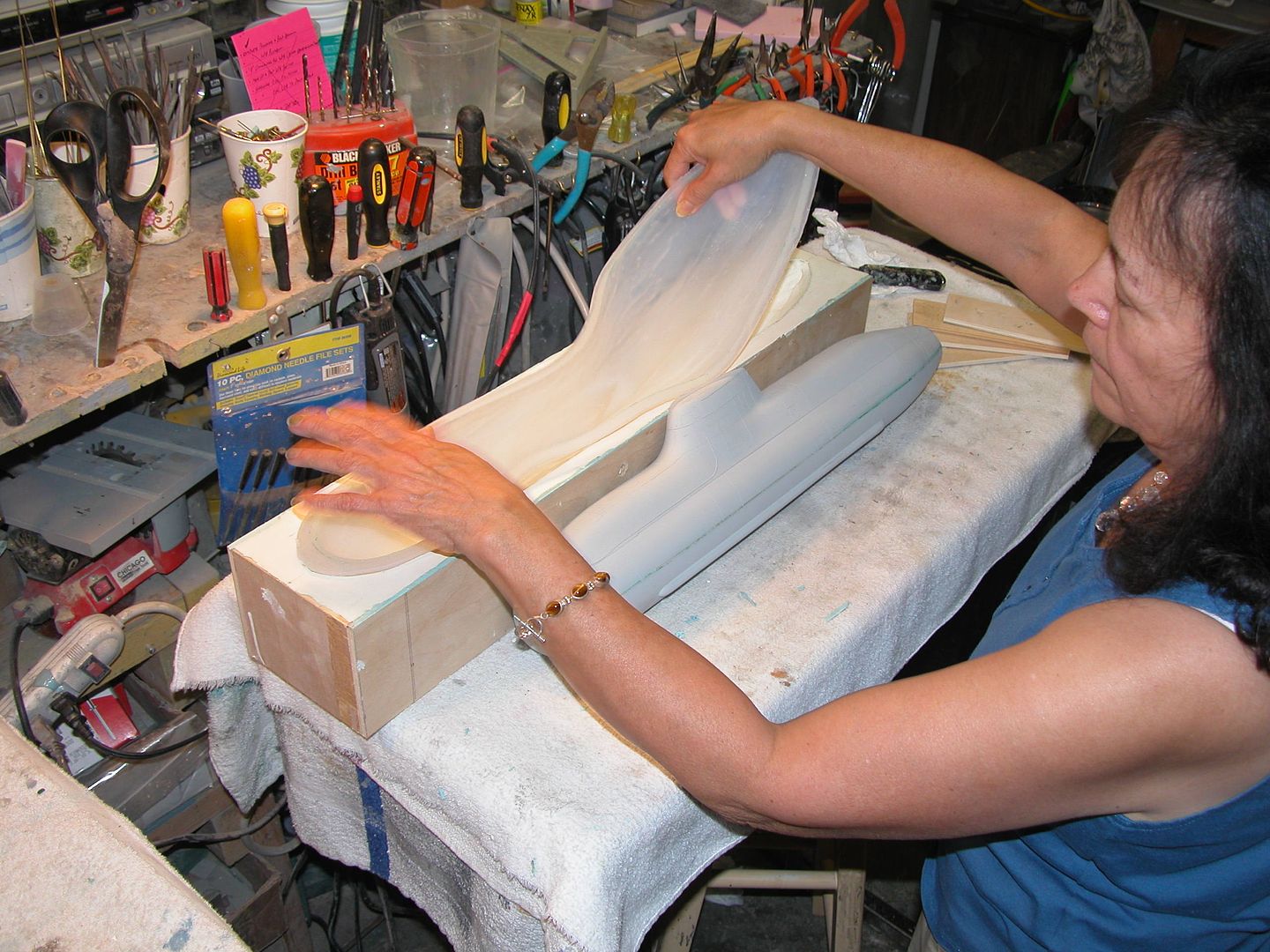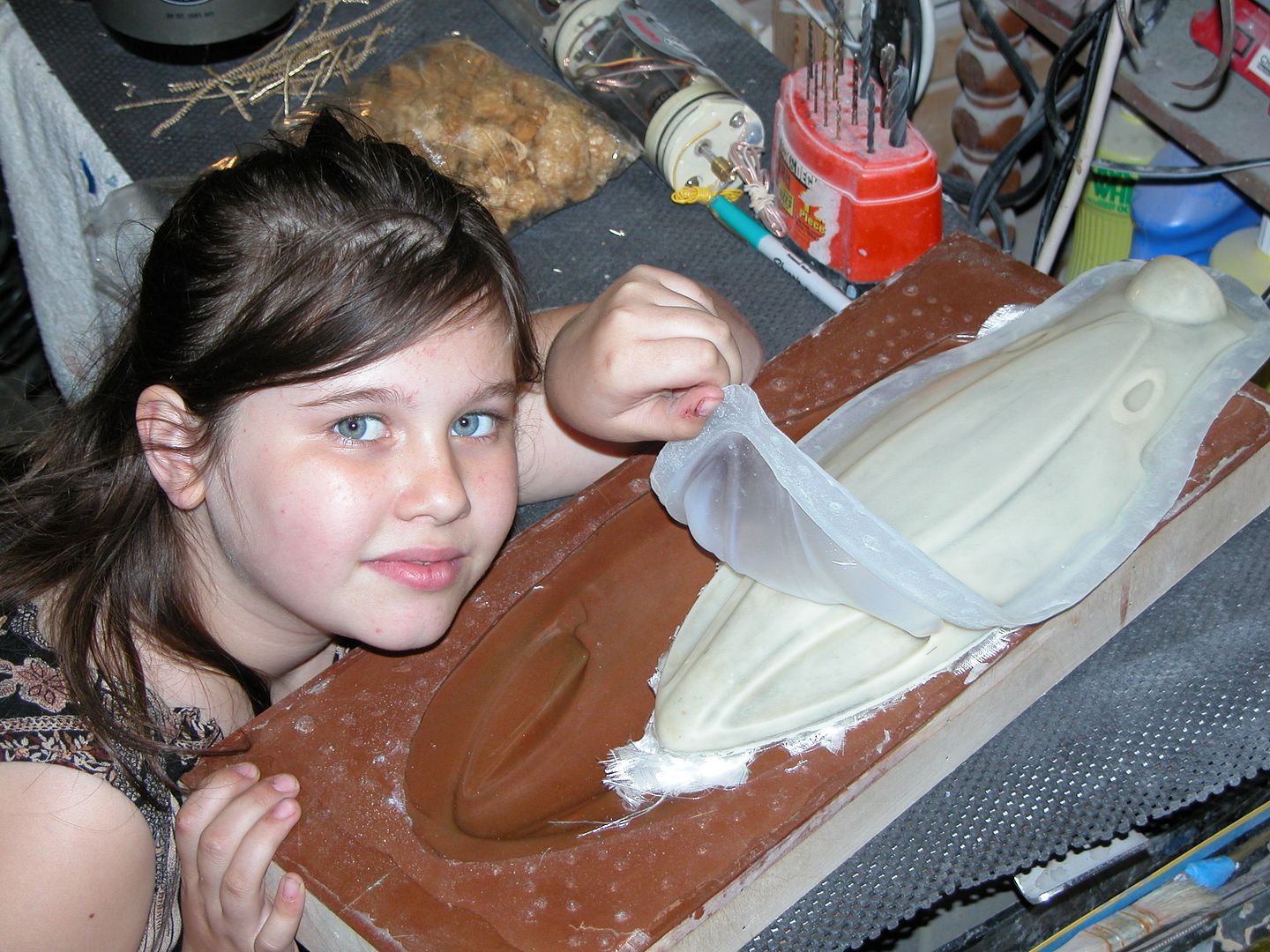Hello All,
Finished work today, I am now officially on long service leave, a week here in Oz before getting on that big petrol budgie and heading off to Europe....
Last week I mentioned getting the Hull prepped for mounting on the board ready to mould. Before moving I carefully wrapped up Dolgoruki in a blanket and packing taped around it of the move to our new house. When I unpacked it a couple of weeks ago I noticed some small cracks occurring along the hull mainly where wood and PVC pipe mixed and interacted. I have put it down to expansion and contraction differences in material. Also we have moved closer to a lake which is only about 200 metres down the road so there may be humidity involved as well.
I will spend this week going over the cracks and rectifying them so that the hull is as smooth as a babies bum. I will then finish off any further scribing that is needed so that when I get back I should be able to pretty much get into the hull mould creation. RTV silicon rubber mould with a fibreglass hardback. In order to reduce the cracking from occurring I will then bag up the hull in garbage bags taped down really well and placed in an area of the Garage with the least amount of temperature change over the next six weeks, fingers crossed.....
Last week I found a nice big table top that wasn't being used and was just the right length to use as a moulding board. I cut it up to the right length and width then cut some side and end pieces to reinforce and strengthen the board and most importantly make sure it stayed absolutely flat. Once this is done I would measure a line down the centre and align the hull on the centre whilst then drawing an outline of the hull to cut out. I spent a fair bit of time getting the profile just right before I was confident that I could now cut out the shape with a jigsaw.
I took a big drill bit and drilled a couple of holes inside the perimeter of the cut out area and then started with the jigsaw. Outside my new workshop is a small bench originally designed for putting the washing basket on , it has an outside power point and is perfect for this kind of work. Clamping down the board and get started.
Once the shape had been cut it was simply a case of seeing how the model fit inside the cut out and whether the hull would sit easily down at the waterline half way. I had to get a rasp and grind away some areas around the stern, but soon enough it was a good fit.
Taking some countersunk self tapping screws and drilling pilot holes around the sides of the board allowed me to then attach the side boards and then the end pieces. At this stage there was no support underneath the hull so that It would simply fall through. I would then cut out two square inserts that would fit in underneath the hull and featured a semi circle cut out to rest the underside hull at just the right level so that the waterline was precisely level with the top of the board.
This whole construction is laminated MDF board so it runs the risk of sucking in moisture over the time I am away, so I am also thinking of bagging this structure as much as possible to reduce swelling and warping. Once again fingers crossed...
Till next Friday, last instalment. I'm hoping that the next sub I see will be the Vesikko in Finland.
David H










Comment